

FOREWORD
Alain Fontaine
Flâneuring on the Streets of Paris Expect the Unexpected Poetry, Art, Flowers & Ice Cream Spotted All Over Paris: The Eiffel Tower
PART 1 Paris & its Cafés
A Certain Alchemy Definitions of Paris Cafés & Bistros All the Streets in Paris Lead to its Cafés
PART 2 The Look & Feel
La Terrasse L’Intérieur Le Zinc
PART 3 The Food & Drink L’Apéritif L’Entrée Le Plat Le Dessert Les Boissons
PART 4 Café Society
A Lively Social Network The Things to Do: From Work to Play
PART 5 The People Who Make Café Society The Patrons The Waiter The Barman The Chef The Animals
PART 6 The Time of Day
Le Petit Déjeuner
Le Déjeuner L’Après-Midi L’Heure de l’Apéro/Happy Hour Le Dîner La Nuit
PART 7 The Time of Year L’Été L’Automne L’Hiver Le Printemps
PART 8 Les Quartiers: Historic, Trendy, & Local Haunts
Odéon Palais Royal Les Grands Boulevards Le Quartier Latin Montmartre Montparnasse St Germain des Prés Le Marais La Bastille All Around Town: Cafés du Quartier
PART 9 In Search of Lost Time Now & Then: Time Regained
PART 10 Poof: The Disappearing Cafés & Bistros
The Loss of a Lifestyle A Café is not a Coffee Shop The Specialty Coffeehouse The Burgering of Paris
PART 11 Looking Forward: Trendy in a Good Way L’Art de Vivre is Alive & Well
PART 12 A Little History: From Coffee to Café History of Coffee History of World Cafés History of Paris Cafés History of Paris Bistros & Brasseries ADDRESSES

Contents 7
10 12
115
8
14 17 25 51 67 79
129 139 195 207 215 227 236
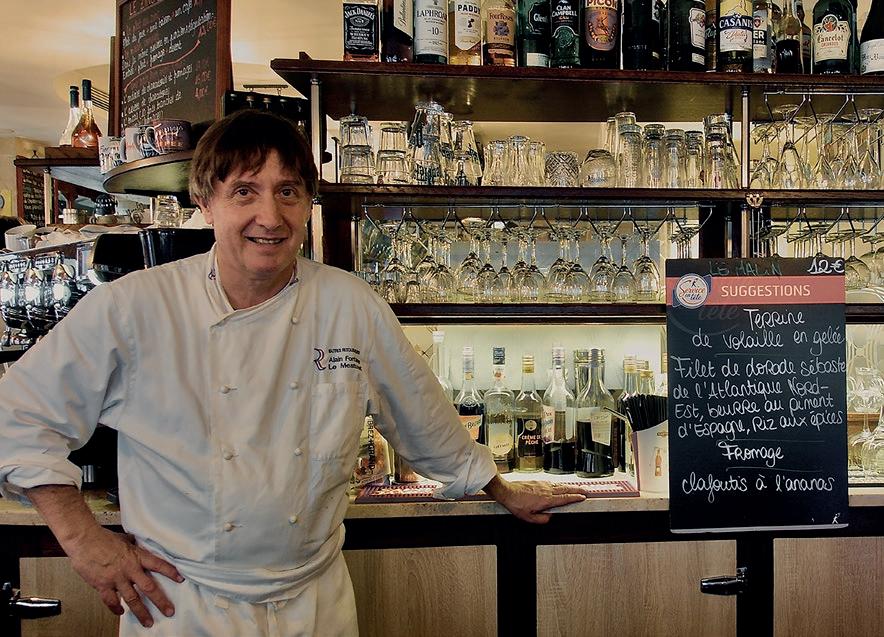


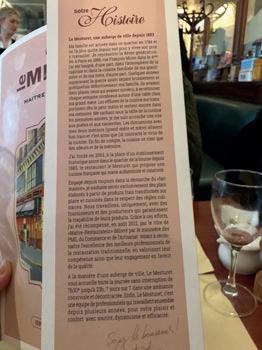

6 –Foreword
–Alain Fontaine
Je voulais féliciter Joanie Osburn qui a su capter l’art de vivre des cafés et bistrots parisiens avec justesse et bienveillance.
A la lecture de son remarquable livre, on comprend d’emblée que cet art de vivre si parisien est en réalité offert aux touristes du monde entier, à tous les amoureux de Paris et des parisiens.
Il fallait le regard particulier d’une “Américaine à Paris” pour raconter ce qui nous semble tellement naturel : le plaisir des terrasses, le goût des produits de qualité travaillé avec soin, le fumet d’un café au comptoir, coudeà-coude avec un étranger qui l’est tout d’un coup bien moins, le goût des autres...
Au détour des pages, on se prend à flâner dans les rues de la capitale, à se rappeler des rencontres entre amis, des moments de convivialité autour des comptoirs de nos bistrots.
C’est toute l’âme du peuple de Paris que Joanie évoque avec talent, sans oublier bien sûr les femmes et les hommes qui travaillent au quotidien à rendre leur ville accueillante, agréable et plus humaine.
Ce beau livre est un manuel poétique pour mieux profiter de l’expérience parisienne, pour comprendre que chaque café, chaque bistrot possède une âme particulière. A chacun de trouver l’établissement qui lui correspond le mieux ! Entre enseignes mythiques et cafés de quartier, nous partageons la même convivialité.
Le Paris que décrit Joanie n’est pas nostalgique, il est bien vivant et nous travaillons tous les jours à le préserver pour nos clients à venir.
Je suis très touché que l’auteure soit si attachée à ces personnages hauts en couleur qui se retrouvent dans nos cafés et bistrots parisiens, échappés d’un film, d’une chanson ou d’un roman.
Merci à elle et longue vie à Café Society, The Cafés and Bistros of Paris !
I wished to congratulate Joanie Osburn, who has captured the art of living in Parisian cafes and bistros with accuracy and benevolence.
Reading her remarkable book, we immediately understand that this Parisian art of living is in fact offered to tourists from all over the world, to all Paris lovers and Parisians.
It took the special eye of an “American in Paris” to recount what seems so natural to us: the pleasure of the terraces, the taste of quality products prepared with care, the aroma of a coffee at the counter, side by side, elbow-to-elbow with a stranger who is suddenly much less so, the taste of others ...
As we turn the pages, we find ourselves strolling through the streets of the capital, remembering meetings between friends, moments of conviviality around the counters of our bistros.
It is the whole soul of the people of Paris that Joanie evokes with talent, without forgetting of course the women and men who work every day to make their city welcoming, pleasant and more human.
This beautiful book is a poetic manual to a better enjoyment of the Parisian experience, to understand that each café, each bistro has a particular soul. It’s up to everyone to find the establishment that suits them best! Between legendary brasseries and neighborhood cafes, we share the same conviviality.
The Paris that Joanie describes is not nostalgic, it is very much alive and we work every day to preserve it for our future clients.
I am very touched that the author is so attached to these colorful characters who find themselves in our Parisian cafes and bistros, escaped from a movie, a song or a novel.
Thank you to her and long life to Café Society, The Cafés and Bistros of Paris!
Alain Fontaine
Foreword
Founder of the restaurant Le Mesturet, President of the Association Française des Maîtres Restaurateurs



La Terrasse
“They line sprawling avenues and stand on corners of tiny streets like sidewalk academies where one learns Bohemian life, scorn for the middle classes, humor, and how to hold a glass.”
Léon-Paul Fargue
Colorful awnings with trademark logos and lettering announce each café with an elegant flourish, beckoning strollers to rest and renew. With their metal-rimmed marble gueridon tables, patterned Rilsan and rattan chairs facing the street, and signature awnings, Paris’ café terraces are as legendary as the Tour Eiffel and much more accessible. People-watching on a terrace has its own expression: flâner en terrasse
The awnings provide protection from rain, snow, and sun (though the French often shun awnings and relish the sun for their de rigueur tan). With the prohibition of cigarettes inside, smokers have taken to the terrace, so non-smokers need to be wary of where they sit and how the wind blows. Brimming with life day and night, even on a snowy winter’s day, heat lamps, blankets, and glass enclosures ensure the terraces are cozy and animated year-round.
By expanding the café’s territory onto the sidewalk, terraces are essentially the outdoor living rooms of Paris. Enlivening the sidewalks with customers’ comings and goings—Left Bank, Right Bank, all around town—lively café terraces invite the public to enjoy a quintessential Parisian street scene.



28 –Part 2 –The Look & Feel









Le Zinc
Honoré de Balzac
Ah, le zinc—the quintessential Parisian counter or bar and the common term for a café or bistro—was developed by the joiner Emile Verrière in 1821 and first fabricated by zinc roofers. By the mid-19th century, before Paris had a water supply network and indoor plumbing or heating, the hard-working Auvergnats from the Auvergne or Aveyron of France’s Massif Central sold and delivered water, coal, and firewood to the population from their simple kiosks. To sweeten the deal, they added wine, coffee, lemonade, and then simple one-dish meals. A zinc counter provided the ideal surface behind which a husband-andwife team would preside and serve their customers. The owners were king and queen behind le zinc, often witnesses to marriages, spies for local police, and arbiters of neighborhood gossip and disputes. Habitués, feeling at home, often lived at le zinc from opening to closing, with only work to interrupt. Workers from nearby factories began their day early with their newspaper and companions, tuer le verre (killing the glass) of white wine for breakfast, followed by drinking and eating breaks throughout the long workday and into the evening. Rarely were stools provided—you stood at the bar to drink, socialize, read the newspapers, argue politics. In the right café at the right time, these prototypical men can still be found at le zinc from early morning on through the day until the last apéritif.


The Belly of Paris by Émile Zola, published in 1873, has the first recorded mention of le zinc. The novel takes place in and around Les Halles, where the Auvergnats founded the bistros of Paris, complete with iconic zinc bars. These Auvergnat entrepreneurs and their descendants have continued to run almost three-quarters of the humble and prominent bistros and cafés throughout Paris in the 20th and 21st centuries, including the illustrious Le Flore, Le Dôme, La Coupole, and Les Deux Magots in the 6th arrondissement. A few of the originals endure, some transformed utterly, others, thankfully, preserved.
Le zinc is usually a bar counter fabricated with zinc; however, in France, le zinc is a metonym that refers to a small café or bistro. Technically, the bar can be manufactured with marble, wood, copper, or even Formica and still be called le zinc
In the late 1880s, zinc counters in Paris numbered 70,000. During the German occupation in WWII, most were melted down. While production of these sturdy bars, with finely decorated edges, continues in the 21st century (often crafted by the same families), unfortunately, today, not all café, bistro, and brasserie counters in Paris are fabricated with zinc.
42 –Part 2 –The Look & Feel
“The bar of a cafe is the parliament of the people.”










51 –Part 2 –The Look & Feel PART 3
Food
The
& Drink
The French spend more time eating than any other nation—more than two hours a day, sometimes at lunch alone. Possessing an intricate understanding of ingredients and food pairing perfected over the centuries, they effortlessly serve up a roster of classic dishes on their tables: foie gras with sweet jam and fruit bread, duck confit with sautéed potatoes and warm arugula, moules-frites, choucroute garnie. Adding to the classic mix is a perpetual French penchant for inventing new dishes and minting or adapting culinary trends. Thus, whoever travels to Paris can be assured that eating well here will, indeed, be an unparalleled experience. The difficulty will be pacing oneself when confronted by too many choices in too few days.



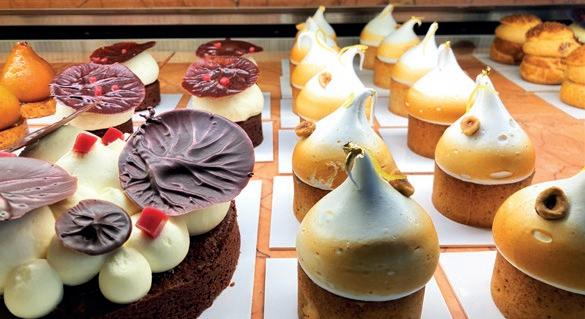






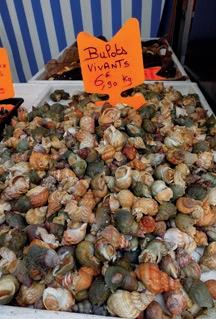
















The French bring to the table the same appreciation, respect, intelligence, and lively interest that they have for the other arts, for painting, for literature, and for the theatre.”
 Alice B. Toklas
Alice B. Toklas

French pastries are world-renowned, and who doesn’t fall for the exquisite lusciousness of these intricately crafted delicacies? Yes, sugar, cream, and butter work magic on the taste buds, and the elegant forms and colors of each creation bring joy to the eye. However, we cannot ignore beaucoup de other incomparable French desserts, including mouthwatering ice cream and cheese. Not to be missed is an ice cream pilgrimage to Berthillon on Île Saint-Louis, where the flavors are natural, and the lines form no matter the weather. Those with a cheese tooth rather than a sweet tooth can order the ubiquitous cheese course. As De Gaulle once said, “how can you govern a country which has 246 varieties of cheese?” Shall we also savor a moment of reverence to taste Proust’s madeleine? You must walk a lot in Paris to keep fit because the temptations are worth the indulgence.

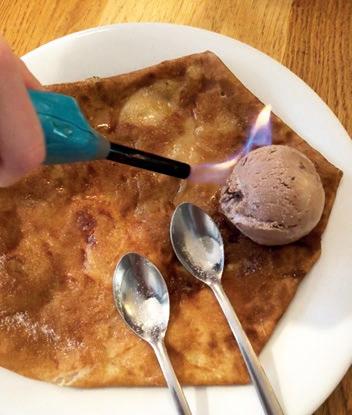
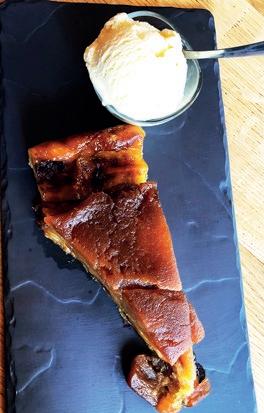
62 –Part 3 –The Food & Drink
Le Dessert








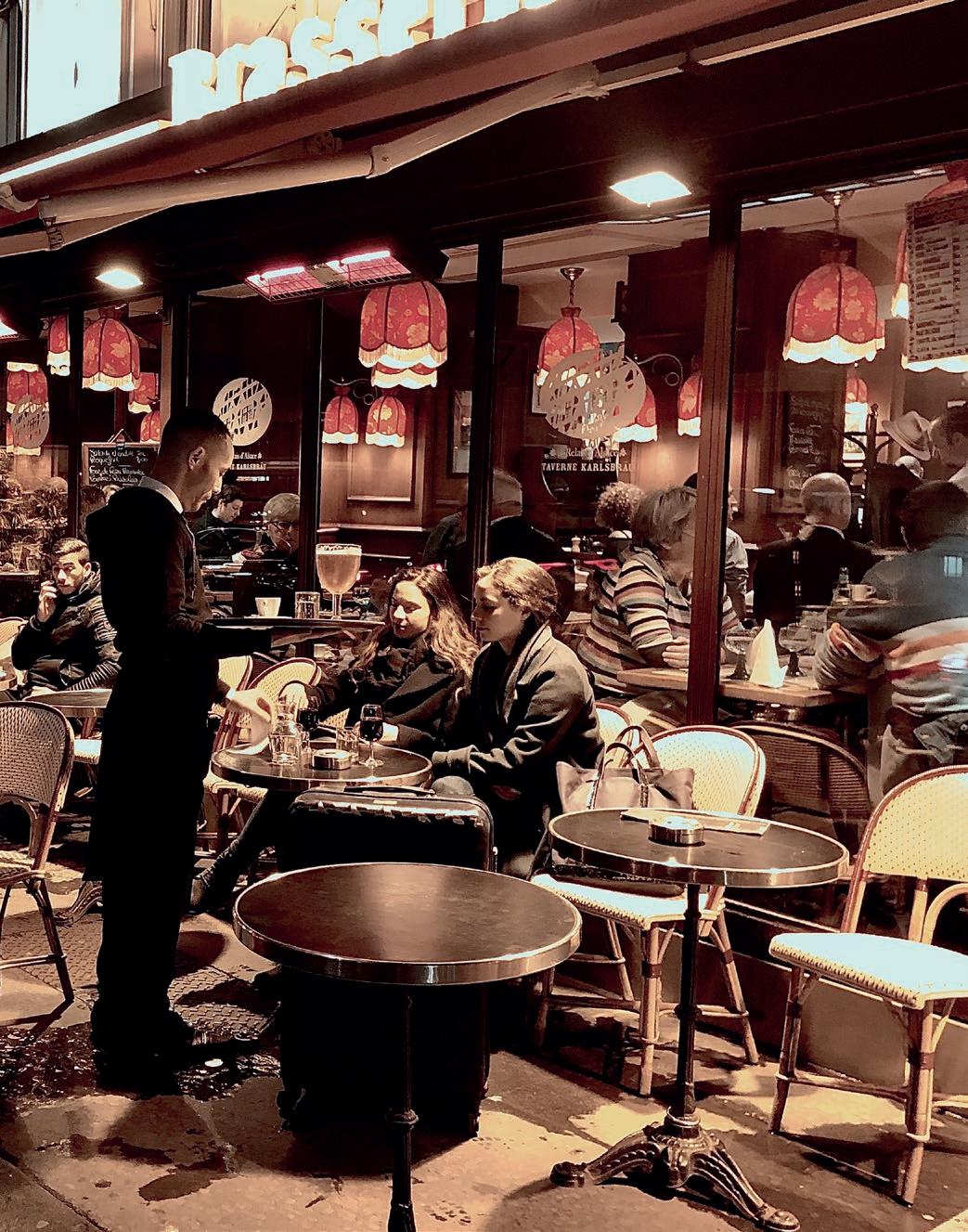

























































 Alice B. Toklas
Alice B. Toklas












